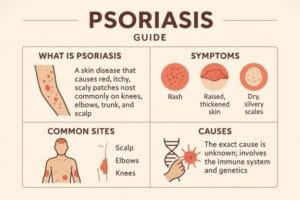Measles: A Stubborn Sickness, Our Shared Challenge
Table of Contents
Measles: A Stubborn Sickness, Our Shared Challenge
Measles, a disease you might think belongs to old history books, is causing trouble again, raising questions for me and many others about its presence in communities across the United States. I see parents worried about the early symptoms of measles in toddlers, contemplating precisely how serious this viral infection truly is. This illness, often misunderstood simply as a rash, carries substantial risks, prompting us to revisit the facts and understand why vigilance remains critical. My goal is to equip you with clear information, to cut through the noise, helping you make informed decisions for yourself and your loved ones regarding the prevention and management of measles. It requires our collective effort, an active stance against what could become a widespread public health problem.
Understanding Measles: The Rash Truth About a Contagious Illness
What exactly happens when measles gets into a person? This highly contagious viral illness spreads through tiny, invisible particles when an infected individual coughs or sneezes. I’ve learned these virus droplets can linger in the air for up to two hours, or they can settle on surfaces, waiting for an unwary hand to make contact. Consider it like an invisible cloud, potent and patient. If you’re unvaccinated and come into contact with the virus, there is an approximate 90% likelihood you will catch it. That is a significant number, underscoring its rapid transmission.
Recognizing Measles Symptoms and When to Act
When someone gets measles, it usually starts subtly, often mimicking a severe cold or flu. Imagine waking up with a high fever, typically reaching levels I consider quite alarming, perhaps 103°F or higher. Accompanying this might be a persistent, barking cough, a runny nose that just won’t quit, and eyes that are red, watery, and light-sensitive—conjunctivitis, to be precise. These initial indicators can feel familiar, making an early diagnosis tricky. Two or three days into these early signs, you might notice something quite specific: small white spots with reddish halos inside the mouth, particularly across from your molars. These are Koplik spots, a tell-tale sign of measles, often disappearing just as the distinctive rash appears.
The measles rash is what most people picture. It usually shows up three to five days after those initial flu-like symptoms, starting on the face and behind the ears before making its journey down the body, covering the trunk and limbs. On lighter skin, it appears red and blotchy; on darker skin, it might look purplish or simply darker than the surrounding skin, sometimes challenging to spot. Does the rash itch? Not typically, which differentiates it from some other viral rashes. Knowing how long does measles rash last on skin can also be helpful; it often lingers for several days, changing color to a dark brown before fading entirely.
The Dangers of Measles: Why It’s More Than Just Spots
I often emphasize that measles is not just a childhood inconvenience. It carries the potential for serious complications. Pneumonia, for instance, a severe lung infection, remains a leading cause of death among young children with measles. Ear infections are common, and dehydration can be a real issue. What truly concerns me, though, are the less common but far more devastating consequences, such as encephalitis—swelling of the brain. This can lead to lasting brain damage, deafness, or even be fatal. I have seen firsthand the profound and long-term impact on affected families.
Moreover, measles has a sneaky effect on our immune system. It can cause what scientists call “immune amnesia,” wiping out the memory our bodies built against previous infections for years after recovery. This leaves someone vulnerable to other illnesses, a fact many people do not realize. For pregnant women, contracting measles can result in serious outcomes: miscarriage, stillbirth, premature birth, or a baby born with low birth weight. It truly makes me question anyone who believes contracting the illness is a trivial matter, or even beneficial.
Measles Through Time: A Global History and Vaccine Triumphs
This persistent illness has been with us for a remarkably long time. Researchers suggest the measles virus evolved from a cattle virus thousands of years ago, adapting to humans as our populations grew. The first clear medical description of measles emerged in the 9th century, with a Persian physician even considering it “more dreadful than smallpox.” Imagine a world where this sickness was a dangerous childhood rite of passage.
Life Before the Measles Vaccine
Before the 1960s, measles wreaked havoc globally. In the United States alone, millions were infected each year, leading to hundreds of deaths and thousands of hospitalizations. I recall stories from older family members about communities experiencing widespread illness. Epidemics could devastate entire populations, particularly those without prior exposure. The arrival of measles in the Faroe Islands in 1846, for example, decimated a significant portion of the population. This pre-vaccine era starkly illustrates the sheer power of the virus when left unchecked.
The Scientific Breakthrough for Measles Protection
The turning point came in 1954 when scientists isolated the measles virus, paving the way for a preventative measure. This was a monumental stride. The first measles vaccine was licensed in 1963. An improved, weaker version followed in 1968, which has been used in the US since. Then came the ingenious combination vaccines. In 1971, the MMR vaccine emerged, protecting against measles, mumps, and rubella in a single shot. Later, the MMRV vaccine added chickenpox protection. These advancements, to me, stand as monumental achievements in public health.
Thanks to widespread vaccination efforts, the United States declared measles eliminated in 2000. This meant there was no longer continuous transmission within the country. It was a massive public health victory. We learned that two doses of the measles vaccine are about 97% effective at preventing measles, offering long-term protection against the disease.
Current Challenges: Measles Opinions and Outbreaks in 2025
Despite the clear scientific consensus and historical success, measles continues to pose a puzzle for public health. I frequently see questions from people wondering, “how effective is the MMR vaccine against measles?” The answer, unequivocally, is highly effective, as both the World Health Organization (WHO) and the Centers for Disease Control and Prevention (CDC) attest. They strongly recommend two doses of the MMR vaccine for children and a single dose or other evidence of immunity for most adults.
Understanding Vaccine Hesitancy
While many trust medical guidance, a vocal minority expresses doubts, contributing to current measles outbreak statistics in the United States. A KFF poll from April 2025 indicated that over half of surveyed adults expressed uncertainty about believing false statements regarding the measles vaccine. I believe a core issue here remains the thoroughly debunked 1998 study, falsely linking the MMR vaccine to autism. That paper was retracted, and its author discredited for unethical conduct and data manipulation. Yet, its ghost lingers, influencing parents who are searching for answers and measles prevention for infants.
Why Do People Hesitate About Measles Vaccination?
I observe several recurring themes among those who hesitate:
- The “Natural Immunity” Debate: Some prefer natural immunity, arguing it is superior. However, this means enduring the actual illness, risking severe complications like pneumonia, brain swelling, hospitalization, or even death, none of which is a pathway I would choose for my family. The vaccine provides protection without those grave dangers.
- Concerns About Vaccine Load: Worry about too many vaccines at once is also common. My perspective is this: medical professionals meticulously plan vaccine schedules to offer crucial protection at the most impactful times, far outstripping the theoretical risks.
- Misinformation and Social Media Echo Chambers: The rapid spread of false information online is a persistent challenge. Misleading posts can quickly solidify doubt, making it hard for accurate, evidence-based information to break through. I’ve often seen how a compelling anecdote, however false, can trump scientific fact for some.
Testimony: “I remember getting measles as a kid before the vaccine was common. It wasn’t just a fever; it was weeks of feeling miserable, my eyes hurting, and that rash everywhere. My younger brother ended up with an ear infection that left him with permanent hearing issues. When the MMR vaccine came out for my own children, there was no question in my mind. I wanted them protected from that severe experience I lived through.” – Sarah J., 58, mother of two.
The COVID-19 pandemic also created a “spillover hesitancy,” leading some people to distrust other vaccines. This compounds the issue, threatening the herd immunity needed for collective protection. We aim for 95% vaccination coverage to create a shield for everyone, especially those too young to be vaccinated or with compromised immune systems. When rates fall short, outbreaks occur. It’s that simple.
Shaping the Future: Measles Eradication Efforts and Innovations
Looking ahead, my focus turns to strengthening our defenses against measles. The stakes are significant: if vaccination rates do not improve globally, measles could again become a common illness, even in countries where it was once a distant memory. I often think about the future developments in measles eradication efforts.
Closing Immunity Gaps and Reaching Every Child
A key objective involves reaching at least 95% vaccination coverage with two doses of measles-containing vaccine in every community. This means identifying and vaccinating “zero-dose” children—those who have missed even their first dose—and addressing communities impacted by conflict or other disruptions. It’s not a “one-size-fits-all” approach; it demands tailored strategies integrated within primary healthcare systems, with community leaders playing a crucial role in spreading accurate information and building trust. Imagine local outreach programs going door-to-door, dispelling myths.
Innovative Solutions for Vaccine Delivery
The horizon brings exciting possibilities for vaccine delivery. Researchers are working on microarray patches (MAPs), essentially vaccine “stickers” you apply to the skin. These could simplify logistics immensely, eliminating the need for cold storage and potentially allowing for self-administration. I foresee these becoming available around 2030, a real game-changer, especially in remote or underserved areas.
Beyond the Sticker: Smarter Tools for Measles Control
- Rapid Diagnostic Tests: New, faster tests will help us identify measles cases and outbreaks much sooner, enabling quicker containment.
- Electronic Immunization Records: Digital tracking systems ensure children receive all necessary doses and help identify gaps in coverage.
- Enhanced Cold Chain Technology: Ensuring vaccines remain potent from manufacture to administration, particularly in challenging climates.
- Geographic Information Systems (GIS): These tools will help target vaccination campaigns more effectively, pinpointing areas where immunity is low.
Addressing Misinformation and Building Trust
I believe a critical battle lies in combating misinformation. This means empowering people with better media literacy and critical thinking skills. It’s about teaching them how to evaluate information, not just consume it. Trusted community figures will be instrumental in delivering accurate, culturally relevant information. It’s not enough to simply state facts; we must communicate them in a way that resonates with diverse audiences.
Maintaining Vigilance: Our Collective Responsibility to Prevent Measles
Measles, a disease with a long and impactful history, reminds us that even defeated diseases can stage a comeback if we lower our guard. We have the tools—safe, effective vaccines—to prevent this serious illness and its devastating complications. The path forward involves sustained, collective action. It requires ensuring high vaccination coverage, embracing innovative delivery methods, and actively countering the spread of misinformation. My hope is that everyone understands the importance of protecting ourselves and our communities from measles. We each have a part to play in keeping this disease a relic of the past. If you are uncertain about your or your family’s vaccination status, I urge you to talk to a healthcare provider today.
Frequently Asked Questions About Measles
1. What causes measles?
Measles is caused by a highly contagious virus that spreads through airborne droplets when an infected person coughs or sneezes. The measles virus is extremely efficient at moving between people.
2. What are the common symptoms of measles?
Commonearly symptoms of measles in childrenand adults include high fever, cough, runny nose, red, watery eyes, and characteristic white spots inside the mouth (Koplik spots), followed by a red, blotchy skin rash that typically starts on the face.
3. How contagious is the measles virus?
Measles is one of the most contagious human diseases. An infected person can spread the virus for about four days before the rash appears and for four days after it starts. Up to 90% of unvaccinated individuals exposed will contract it.
4. Is the MMR vaccine safe and effective against measles?
Yes, the MMR (Measles, Mumps, Rubella) vaccine is remarkably safe and highly effective. Two doses offer approximately 97% protection against measles, significantly reducing the risk of illness and serious complications.
5. Can adults get measles, and is it serious for them?
Adults can indeed contract measles, and it can be quite serious for them.Measles complications in adults over 20often include a higher risk of pneumonia, hospitalization, and other severe outcomes compared to children.
6. What are Koplik spots, and why are they important for measles diagnosis?
Koplik spots are small, white spots with red centers found inside the mouth, usually opposite the molars. They are a definitive early sign of measles and help differentiate it from other rashes, appearing a few days before the skin rash.
7. Where can I find reliable information about measles and vaccinations?
For reliable information about measles and vaccinations, I recommend consulting official health organizations such as the Centers for Disease Control and Prevention (CDC) or the World Health Organization (WHO).















Post Comment